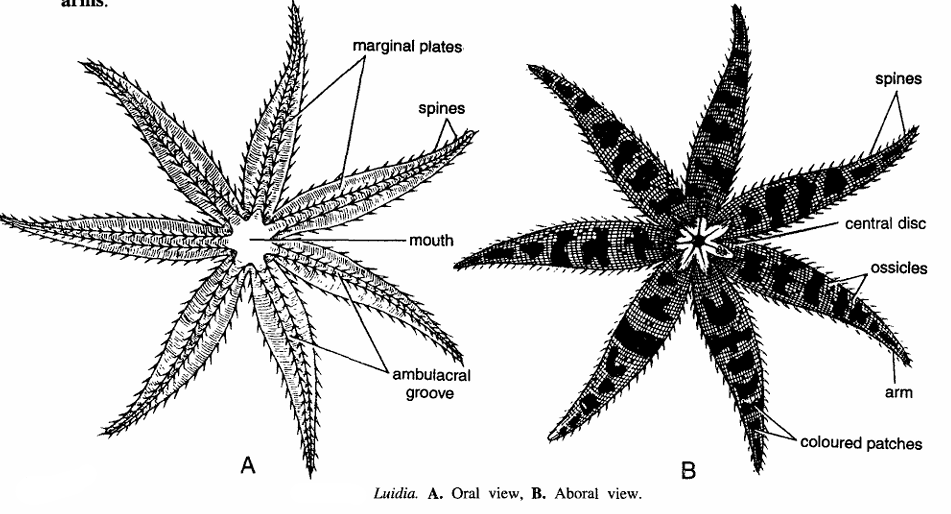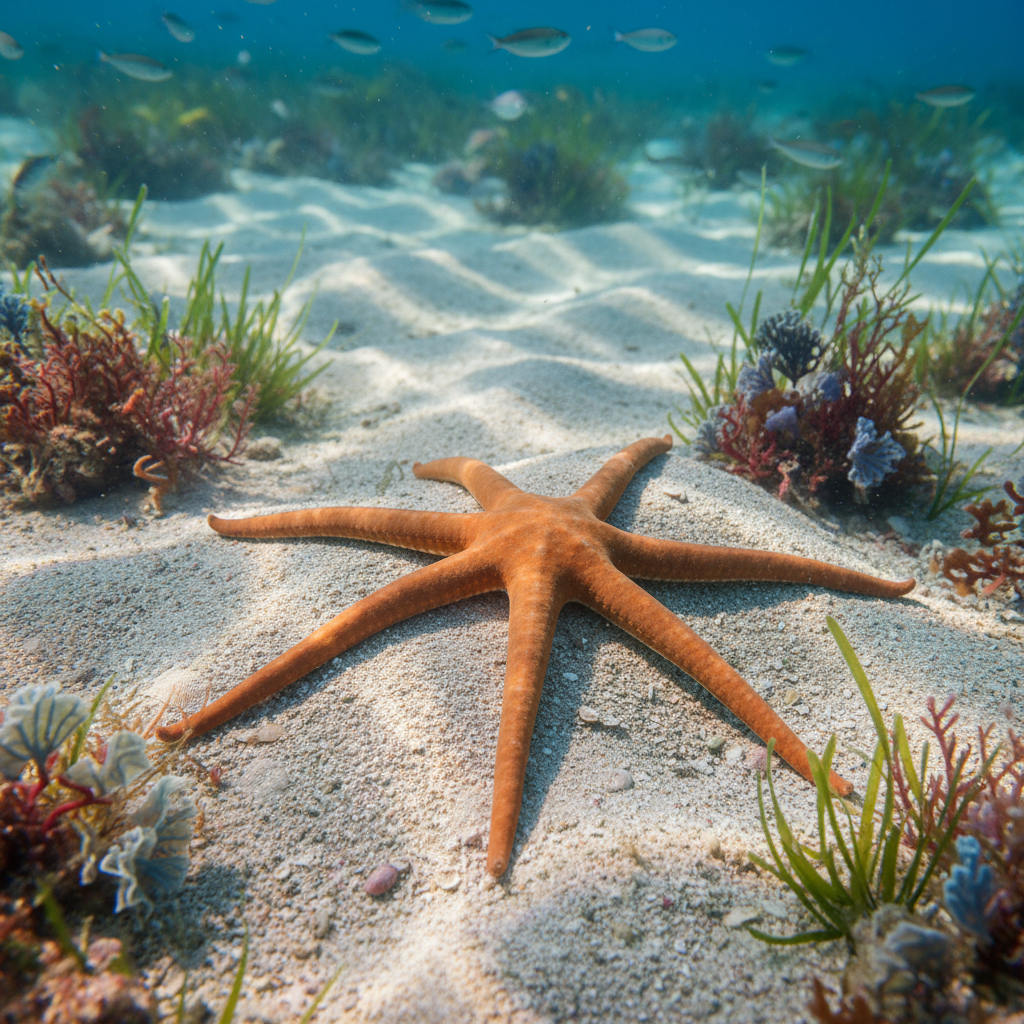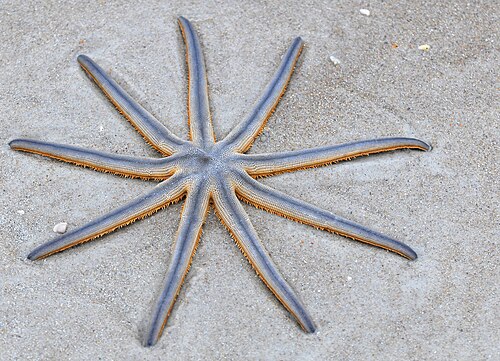Luidia: Morphology, Classification, Habitat, and Ecological Role of Spiny Long-Armed Starfish
Luidia is a genus of starfish belonging to the family Luidiidae and is notable for its long, slender arms often fringed with spines and pointed tips. Species in this genus are distributed worldwide and inhabit various marine environments from shallow coastal waters to deep seabeds. Luidia starfish are carnivorous predators feeding on buried small invertebrates and are unique in that their tube feet lack suckers. These starfish display interesting reproductive behaviors including larval cloning and asexual reproduction at larval stages.
Classification of Luidia
| Taxonomic Rank | Name | One-line Characteristics |
|---|---|---|
| Kingdom | Animalia | Multicellular eukaryotic organisms |
| Phylum | Echinodermata | Marine animals with spiny skin and radial symmetry |
| Class | Asteroidea | Star-shaped marine echinoderms |
| Order | Paxillosida | Starfish with spiny arms and no suckers on tube feet |
| Family | Luidiidae | Family containing only genus Luidia |
| Genus | Luidia | Spiny long-armed starfish with pointed tips on arms |

Habit and Habitat
Species are found globally, often on sandy or silty substrates in coastal regions, but some species reside in deeper waters. They can move quickly across the seabed to capture prey and sometimes gather in groups. They avoid pushing out their stomachs to feed, instead swallowing prey whole.
General Characteristics
- Commonly called as star-fish.
- Animal consists of a comparatively small, central disc and 5 to 11 elongated, flexible and cylindrical arms.
- Body differentiated into oral and aboral surfaces.
- Arms are bordered with spiny fringe.
- Oral surface contains a central mouth with communicates with ambulacral grooves in each arm. Marginal plates on margin.
- Infra-marginal plate is separated from the ambulacral plate by a small intermediate plate.
- Aboral surface is made up of several small rectangular ossicles. This surface is marked by coloured patches.
- Pedicellariae are generally found. The gills are branched. Anus and intestinal caeca are absent.
- Body Form: Central disc with typically 5 to 9 long, tapering arms edged with spines.
- Surface Texture: Covered with paxillae—flat-topped pillar-like structures with spinules.
- Tube Feet: Two swollen regions but lacking suckers, suited for moving over soft substrates.
- Coloration: Varied colors often matching the seabed; includes shades of brown, orange, yellow.
- Feeding: Carnivorous, preying on buried invertebrates such as brittle stars and small mollusks.

Special Features
- Arm Loss: Frequently autotomize (drop) arms when stressed, with capacity for regeneration.
- Locomotion: Fast-moving starfish with muscular arms.
- Larval Cloning: Unique ability among starfish where larvae replicate asexually before metamorphosis.
- Digestive System: Possess a mouth, esophagus, and cardiac stomach but lack pyloric stomach and anus.
- Reproduction: Separate sexes with external fertilization, releasing gametes into water.
Identification
- Long, slender arms with pointed tips and spiny edges.
- Paxillae covering central disc and arms.
- Absence of sucker-like structures on tube feet.
- Color patterns and arm counts help differentiate species.
- Rapid movements and tendency to drop arms.
Life Cycle and Reproduction
Luidia larvae develop as bipinnarial larvae without progressing to a brachiolar stage before metamorphosis into juveniles. They are capable of larval cloning and asexual reproduction during the larval phase, which is a rare adaptation providing population resilience. Adults reproduce sexually in the water column with no parental care.

Ecological Role and Importance
Luidia species serve as important predators in soft-bottom marine ecosystems, regulating populations of brittle stars, mollusks, and other invertebrates. They influence benthic community structure and have rapid movement and defensive behaviors that impact local food webs.
References
- https://en.wikipedia.org/wiki/Luidia
- https://en.wikipedia.org/wiki/Luidia_senegalensis
- http://www.wildsingapore.com/wildfacts/echinodermata/asteroidea/luidia.htm
- https://sealifebase.se/summary/Luidia-senegalensis.html
- https://www.marlin.ac.uk/species/detail/1757
- https://animaldiversity.org/accounts/Luidia_ciliaris/
- https://bih.gov.hk/en/species-database/species-information/index.html?id=5985
- https://habitas.org.uk/marinelife/species.asp?item=ZB670
- http://www.marinespecies.org/aphia.php?p=taxdetails&id=213113
- https://www.sealifebase.se/summary/Luidia-maculata.html

